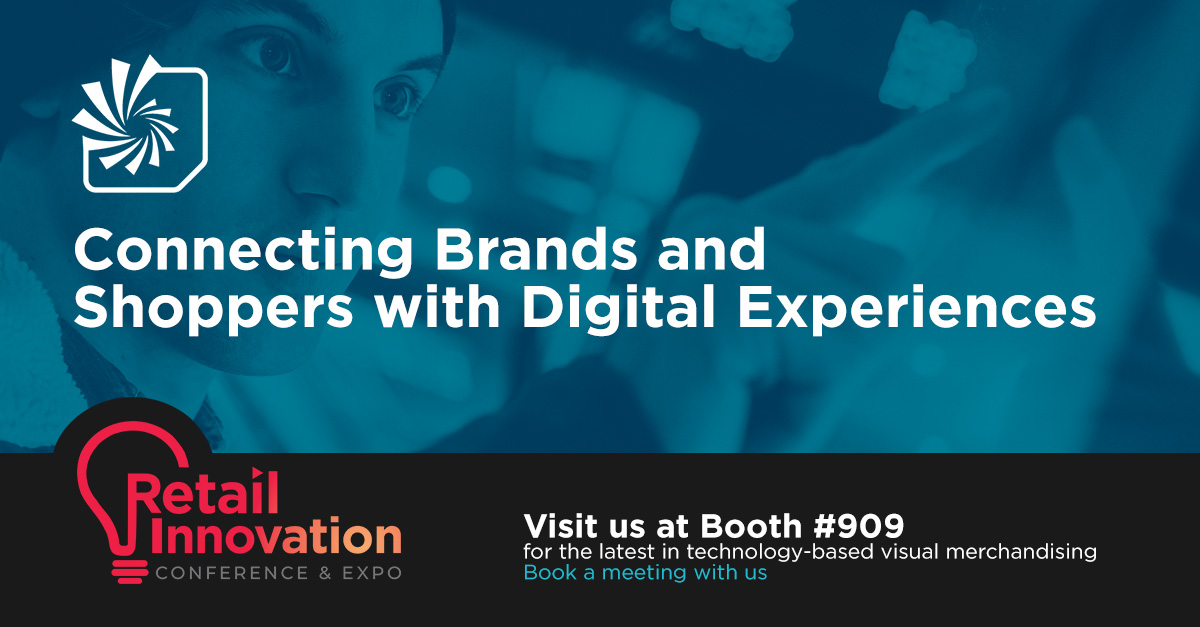Why Boosting Employee Engagement is Critical (and How Digital Signage Can Help)
It’s been said that a happy employee is a better employee, but it usually takes more than just a regular paycheck to make someone happy. Employees want to feel appreciated, knowing the company values their contributions to its success and actively invests in their future. This is even more critical when an employee has direct impact on sales and support. The more engaged your employees are, the more likely they'll go out of their way to deliver an exceptional customer experience. After all, 32 percent of customers say they’d stop doing business with a brand they love after a single bad experience.
The results of a 2019 Gallup poll show employee engagement levels were at an all-time high—35 percent—but the flip side is that the other 65 percent fall into the “not engaged” category. The fact that two-thirds of employees don’t feel engaged in their workplace is a huge problem, especially for retailers which often compete primarily based on the experience their employees provide their customers.
So why is it, then, that 46 percent of organizations don't measure their level of employee engagement, and only 29 percent have leaders who prioritize employee engagement at all? For something that leads to higher customer satisfaction (and thus brand loyalty and repeat sales), employee engagement needs to receive the attention it deserves and the resources to develop it to its full potential.
One of those resources should be digital signage, because when used properly, it has the ability to improve employee engagement far better than traditional methods.
Digital divide: The have-desks and have-nots
While certainly not alone in this, brick and mortar retailers tend to have a harder time keeping its employees engaged. It could be that they have a higher percentage of younger, part-time or seasonal employees. However, what retail shares with other low-engagement industries is a high percentage of non-desktop workers. This leads to a bit of a digital—and cultural—divide.
In a world with so much emphasis on electronic communication, interaction, and—yes—engagement, non-desk employees often aren’t exposed to the corporate communications and employee training programs many desk-based workers are. Many don’t have or rarely use a company email address, and they don’t have a corporate-issued mobile device, so it’s easy for them to miss out on important messages and opportunities other workers may take for granted.
The lack of these channels makes it more difficult for non-desk employees to feel a true part of the team and have the value of their work reinforced. To feel engaged, it is critical these workers receive consistent messages about the company’s mission, goals, and its values. To stay competitive, they must also receive information on the latest products and services and training that can help them advance their careers. This digital divide between the have-desks and have-nots is one of the biggest challenges a company faces with regard to boosting employment engagement.
Bridging the engagement gap: Traditional methods don’t work
How do companies engage employees without ready access to the typical communications, intranet, training and other digital tools others do? Many of them don’t.
Many still rely on surveys to determine morale and detect other potential engagement issues, as well as performance reviews to provide employees with guidance and opportunities. On their own, though, these traditional tools fall short, if raising employee engagement is the goal. Surveys can't accurately gauge employee engagement, nor can a performance review provide an employee all the opportunities for boosting that engagement. Plus, in distributive environments—think corporate headquarters, regional offices and local stores—these interactions are simply too infrequent to effectively deliver timely messaging to all employees in all locations—especially to non-desk employees.
That’s why bridging the communications and training gap often falls on middle managers. Unfortunately, managers are busy people, and they are human, too, which means that this type of activity is often untimely, in consistent from team to team, or simply doesn’t occur at all. Instead of raising the level of employee engagement, the result is further loss of motivation and enthusiasm. This cannot help but erode the positive customer experience retailers need to deliver, thereby lowering sales, satisfaction and brand loyalty. After all, why expect an employee to treat a customer better than how they perceive their company treats them?
Creating content to engage isn't enough—you have to deliver it
Obviously, workers with desktops, laptop computers or company mobile devices can benefit from rich corporate communications and engaging brand content. They can also use online training tools, providing them better information about the company’s products and services, as well as personal and career development. All this can help ensure a higher level of engagement for these employees. The question is, how do you deliver it to your non-desk employees?
The answer is to use technology many employees already see on a daily basis: digital signage. With technologies like voice interaction and proximity sensors, companies can use digital signage for internal and employee communications, brand awareness, training courses and more, just about anywhere their employees are in the workplace. This isn’t limited to digital screens on the sales floor, either. High bandwidth wireless connectivity lets you put digital experiences in the employee break room, lunchroom, locker room, and on the shop floor—just about anywhere. Use it to keep employees informed on an ongoing basis, so they know what you know and what your customers know—and can thus better assist them when they need it.
Perhaps just as important, you can deliver content to instill a sense of company culture. Not all communications content has to come from the corporate office. In fact, one of the most powerful ways of motivating employees is for their local managers to highlight a job well done. The great thing is that with digital signage content such recognition can be shared across the network to other teams. It boosts morale and helps them to feel like a valuable part of the larger team. In fact, recognizing exceptional employees with customer-facing digital experiences offers the dual benefit of motivating the staff while building brand loyalty with customers.
It all comes down to a more modern way of engaging your employees. Whether you need to provide timely corporate communications, reinforce key company values or brand positioning, push out training to wherever your employees are, or just recognize someone for going the extra mile, digital signage can make it simpler for employees to stay engaged. When that happens, your teams can’t help but give your customers a more engaging experience, too.
If you’re ready to create an even better customer experience by boosting your employee engagement, download our latest eBook to find out how digital signage can help do just that.
Share this
You May Also Like
These Related Stories

Corporate Culture and Communicating Employee Value

Digital Signage by the Numbers: The Connection Between Employee Training and Customer Experience


